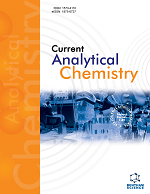
Full text loading...
We use cookies to track usage and preferences.I Understand

Copper, a precious metal in e-waste, presents a substantial economic opportunity. The study estimates that ~322000 tons of copper are discarded annually worldwide as e-waste. Given the significant financial value of copper, its recovery from e-waste is beneficial and crucial. This process also plays a pivotal role in waste management and recycling hazardous waste. The potential reduction in e-waste in landfills is a direct result of this strategic approach to waste management, offering a more sustainable and optimistic outlook for the future. This research paves the way for a future where e-waste is no longer a burden on our environment.
This study is structured around a robust two-step process. It begins with an experiment focused on copper recovery using hydrometallurgical methods. The modeling leverages the power of artificial intelligence (AI) and machine learning techniques to predict copper recovery from e-waste. This innovative approach not only promises but also has the potential to revolutionize the field of copper recovery, inspiring further innovation and progress.
The model was developed using an Artificial Neural Network (ANN) and a Boosting Algorithm (BA). Based on four crucial variables (H2SO4, H2O2, Solid/Liquid ratio, and Reaction Time), this model provides a comprehensive understanding of Cu recovery. H2SO4 is a crucial component during the leaching process; H2O2 facilitates Cu oxidation, the Solid/Liquid ratio affects the efficiency, and Reaction Time determines the completion of the process. The ANN and BA-based models yield satisfactory results in Cu recovery, achieving over 94% yield under optimized conditions.
The model developed in this study can potentially revolutionize copper recovery. By automating the process, we can significantly reduce the stress of copper mining, which relieves the environment. We can also promote a circular economy, offering a promising future for sustainable copper recovery. This could be a game-changer in the field of waste management and recycling.

Article metrics loading...

Full text loading...
References


Data & Media loading...